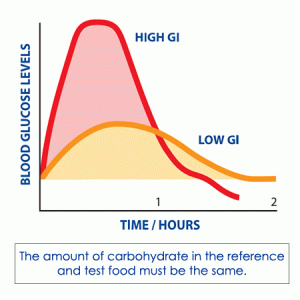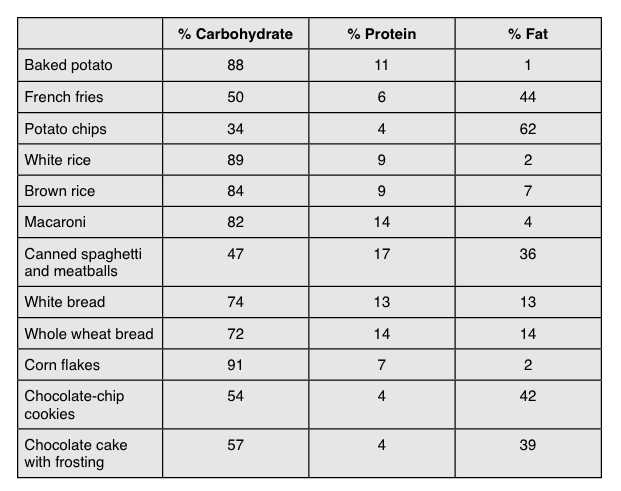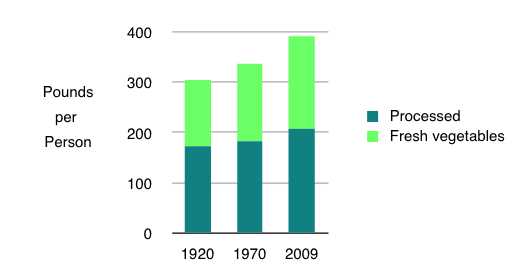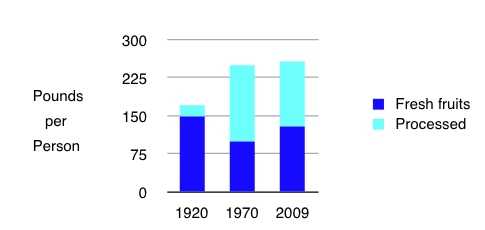Why do we need carbohydrates?
Carbohydrates are the body’s main source of energy. Carbohydrates are called saccharides, and they are made up of carbon, hydrogen and oxygen atoms in the same 2:1 proportion as water.
Carbohydrates can be either naturally occurring or refined.
Naturally occurring carbohydrates include the sugars in fruit or milk, and the starches contained in pasta, rice and potato. They are bound together with fiber (cellulose), and other nutrients like proteins, vitamins and minerals.
Refined sugars are processed from sugar cane or corn syrup. They are added to foods for taste, but they also increase the calorie content, without the benefit of fiber or other nutrients.
There are two large groups of carbohydrates: starches or complex carbohydrates (poly-saccharides) and simple sugars (di- and mono-saccharides).
Important facts about simple sugars and complex carbohydrates:
The most common simple sugars are mono-saccharides: glucose, fructose and galactose.
Simple sugars can also be di-saccharides. The most common are: sucrose (glucose + fructose), maltose (glucose + glucose), and lactose (glucose + galactose).
The body uses glucose for almost all its energy.
Starch is a complex carbohydrate, made up of long chains of glucose. These chains must be broken down before the glucose can be used for energy.
What we know as sugar is sugar cane, with the molasses, minerals and impurities removed. Sugar cane is refined into sucrose. Adding molasses back to sucrose makes brown sugar.
Raw sugar is pulverized sugar cane.
Carbohydrates in health and nutrition:
Americans eat their weight in refined sugar every year.
Fructose is the sugar in fruit. It must be converted to glucose before it can be used. This process takes time, and for this reason fruit intake does not result in a “sugar high.”
Lactase is the enzyme that helps break down lactose. When there is a lactase deficiency, the lactose passes into the bowel undigested where it can ferment, causing gas, bloating and pain. Some people are born with “lactose intolerance,” while most of us acquire some degree of this problem as we get older. By the time we enter middle age almost 60% of all adults have some lactose intolerance. Makes you wonder whether we were meant to drink milk if we don’t have the metabolic apparatus to digest it.
After eating carbohydrates, they are first used for energy, then stored as glycogen in the liver and muscles. If we eat more than we need for energy, the rest of the carbohydrates will be converted to and stored as fat.
All energy comes from glucose metabolism.
Both protein and fat can be used for energy if they are converted back to glucose.
It takes longer for fat to get converted back to glucose than it does for protein.
When you don’t eat enough carbohydrate, and you need a quick supply of energy, the body converts protein from the muscles to glucose.
Eating complex carbohydrates will have a “protein sparing effect.” The energy comes from the carbohydrates instead of protein, so there is less need for protein to be supplied by the diet.
Diabetics are commonly prescribed a diet that is high in complex carbohydrates and low in fat. Diabetics are especially prone to developing atherosclerosis, in which the blood vessels narrow (sclerosis) and get clogged with fat deposits or plaques (athero-). This causes heart disease, kidney failure and poor circulation in the feet and legs.
A diet high in complex carbohydrates improves insulin secretion because of they cause a slower, more even rise in blood sugar. The body is better able to handle the sugar and stabilize the blood glucose/sugar levels.
Why have carbohydrates been given a bad rap?
Most people confuse simple sugar with complex carbohydrates. Candy, soda pop, juice and sugary desserts are not the same things as rice, potatoes and macaroni.
Simple sugars are rapidly absorbed into the blood stream. This causes a “sugar high” that must be brought back down by insulin.
The pancreas pours out insulin in response to the rate of rise, not just the absolute level of blood sugar. Therefore high levels of insulin are secreted to drive the level back down.
Often times there is an overshoot of insulin because the simple sugars in the diet are no longer available, having been rapidly absorbed. The extra insulin causes hypoglycemia (low blood glucose).
The brain relies on sugar for energy, when the level drops (hypoglycemia) it sends out a signal to the body that it needs more sugar. The body is forced to respond.
We get tricked into a cycle of highs and lows.
Low carbohydrate diets are all the rage today. They are considered the panacea of our weight problems. We have ignored the fact that we eat too much! We have been brainwashed into believing that carbohydrates are the main problem. Highly processed foods with their added sugars and fats are the problem.
How carbohydrates are prepared is a major consideration:
% Calories from different “Carbohydrates”
Glycemic index.
Not all foods containing carbohydrates are digested and absorbed at the same rate. Carbohydrates that are quickly absorbed (think candy or sugared drinks) raise blood sugar quickly.

The glycemic index (GI) is the number given to a specific carbohydrate food depending on how fast it raises the blood sugar. The higher the number, the faster the carbohydrate is absorbed. Foods with a high GI cause marked fluctuations in blood sugar levels. Low-GI carbohydrates are digested and absorbed more slowly and therefore cause the blood sugar and insulin levels to rise more slowly. This has been proven to be beneficial for good health.
- Low GI diets improve both glucose and lipid levels in people with diabetes (type 1 and type 2).
- They lower insulin levels, need and resistance.
- Low GI diets aid in weight control because they help control appetite and delay hunger.
- Low GI diets are recommended for people with acne. Decrease the sugar available for bacteria growth.
There is a problem with food processing.
A symposium on diabetes and obesity noted “innovations in food preparation, storage and packaging, including the availability of a broad array of easily prepared meals, are something that busy people are willing to pay for.” These innovations come with a price. Processed food is calorie dense, made more so by adding fat and sugar.
Since 1920 Americans have increased their intake of vegetables by 29% and have actually increased the amount of fresh vegetables from 43 to 47%. The amount grown and canned at home dropped from 43% to 3%. We subsist almost entirely on commercial food production, transport and processing.
The best example of how far processing can gone wrong is ketchup. Read the ingredient list on the side of a bottle: tomato concentrate from ripe tomatoes, distilled vinegar, high fructose corn syrup, corn syrup, salt, spice, onion powder, natural flavoring. Most nutritionists ignore condiments as a problem because of their low fat. However, ketchup is ubiquitous in the restaurant industry, and at school lunch counters. 81% of the calories in ketchup come from added simple sugars! So much for it being considered a vegetable.
A similar pattern has occurred in fruit consumption. While nutritionists proudly boast of a 51% increase in fruit consumption since 1920, the percentage of fresh fruit has dropped from 87% to 50%. Most of the processed fruit consumed today is in the form of juice that has a very high glycemic index. There is some good news however. Since 1970 the amount of processed fruit has decreased from 61% to 50% due to increased consumer awareness of the problem.
Read the ingredient list on a can of peaches: peaches, water, corn syrup and sugar. Processing adds simple sugars and removes fiber and protein.
Macronutrients in fresh versus canned peaches
The USDA has mandated the posting of ingredient lists. It is important to read the labels and understand what they say.






